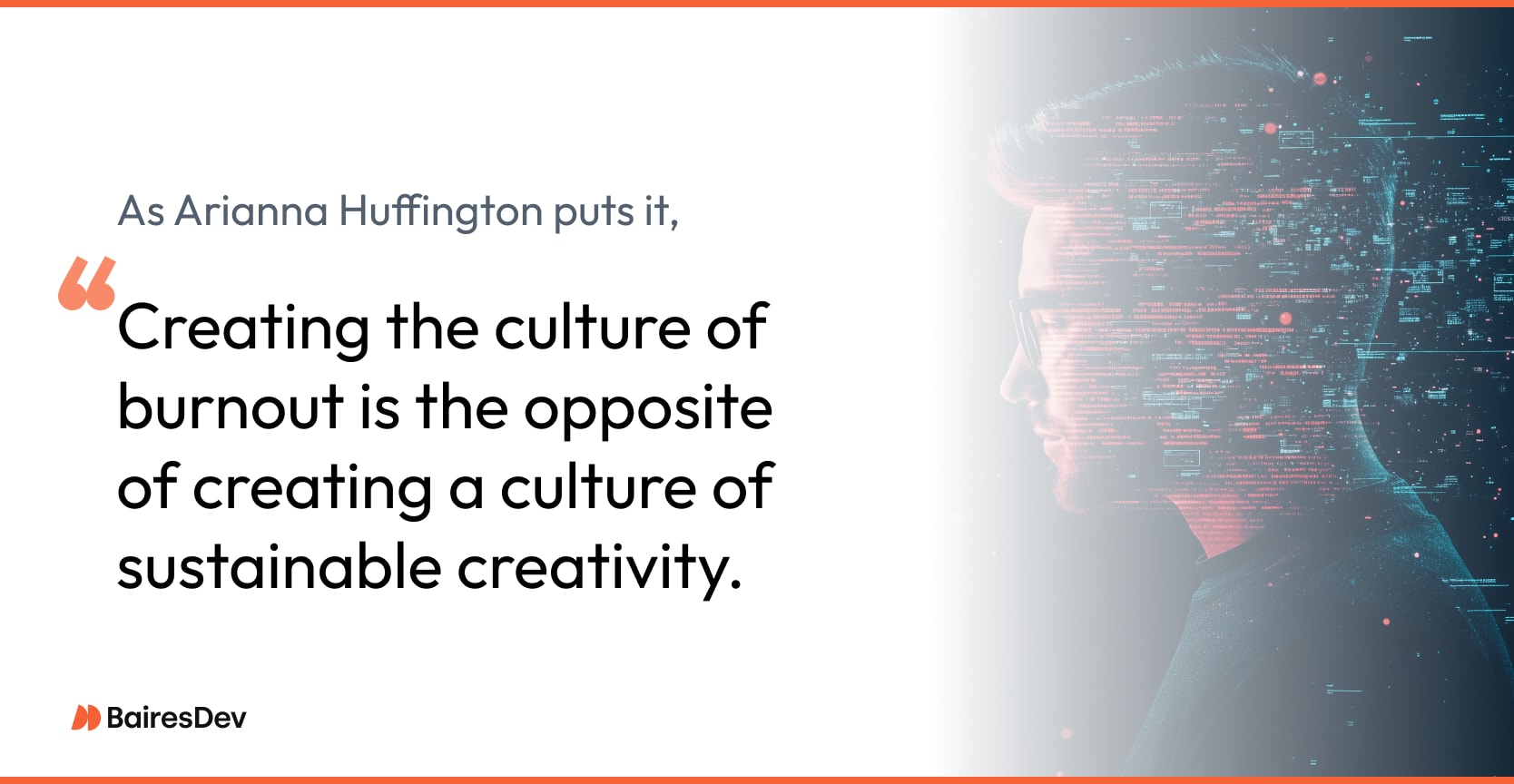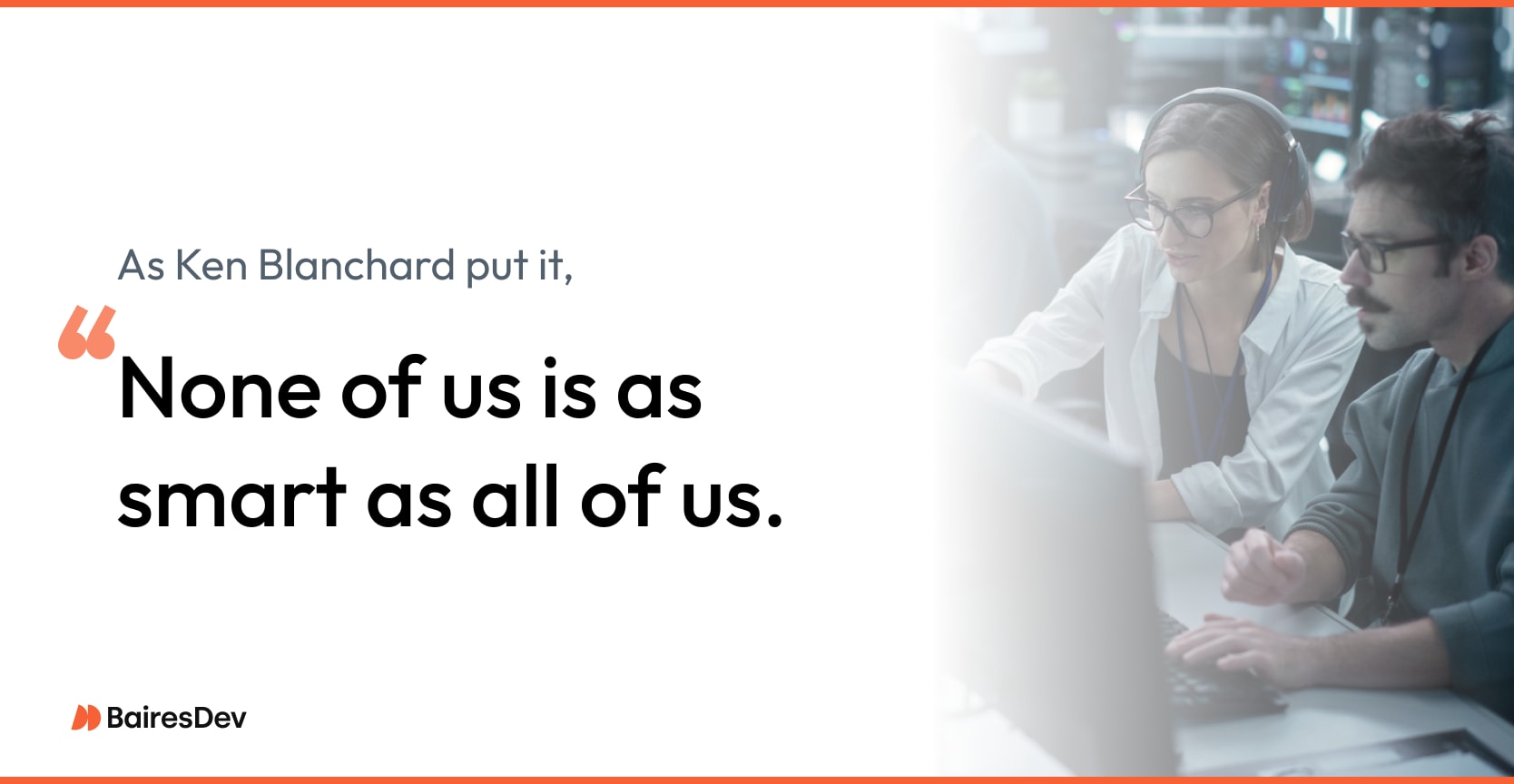Engineering teams are expected to move fast. But when speed comes at the cost of constant pressure, the result is often burnout, mistakes, and high turnover. Simply pushing harder isn’t the solution. The real challenge is delivering high-quality software development services without draining your team.
Burnout hurts both engineers and companies. Stressed developers write lower-quality code. Projects slow down. Good people leave. In contrast, a sustainable pace helps teams stay sharp and engaged.
We’ll cover simple ways to improve workflows and keep teams focused. You’ll learn practical strategies on how to cut busywork and create better systems for building resilient teams. You’ll also understand what engineers need to do to avoid burning out.
Engineering Workflows: Making Work Smoother and Faster
A messy workflow slows teams down. Too many manual tasks, rigid processes, and unclear roles create bottlenecks. The right systems help engineers focus on coding instead of busy work.
Automate Repetitive Tasks
Manual work wastes time. Use CI/CD pipelines, automated code reviews, and infrastructure as code to speed things up. Tools like GitHub Actions and Jenkins handle deployments with less effort.
Make Agile Work for Your Team
Agile doesn’t have to mean endless meetings. Flexible methods like Shape Up or Scrumban keep things moving without the clutter. Clear roles and fewer standups give engineers more time to build.
Improve Developer Experience (DX)
Too many distractions kill focus. Better documentation, strong internal tools, and automated testing reduce mental load. Engineers need freedom, but clear guidelines help them stay on track.
Productivity Methods: Getting More Done Without Overload
Engineering productivity isn’t just about speed. Pushing for faster output without the right structure leads to burnout and sloppy code. The key is to track real impact, manage time wisely, and prioritize a positive work environment that balances new development with long-term stability.
Measuring Engineering Productivity the Right Way
Velocity alone doesn’t show real progress. Instead of just counting story points or sprint completions, use DORA metrics to measure actual performance:
- Deployment Frequency – How often code gets shipped.
- Lead Time for Changes – How quickly changes go from commit to production.
- Change Failure Rate – How often deployments cause issues.
- Mean Time to Recovery (MTTR) – How fast teams fix problems.
Tracking developer job satisfaction and engagement also matters. High churn and unhappy teams signal deeper issues, even if output looks good on paper.
Managing Time for Focused Work
Constant meetings and context switching drain productivity. Engineers do their best work in deep focus, not scattered between interruptions. Try:
- Deep work blocks – Set aside distraction-free hours for coding.
- Maker vs. manager schedules – Protect engineers’ time by limiting meetings, while managers focus on communication and alignment.
Prioritizing Work Without Overloading Teams
Non-stop feature development leads to tech debt and messy codebases. Balance new work with refactoring and maintenance:
- Plan for debt reduction – Schedule time for cleanup, not just new features.
- Use impact versus effort frameworks – Prioritize tasks based on their long-term value.
The best teams are efficient and sustainable. They’re structured for continuous learning, professional growth, and long-term, sustained success.
Leadership Tactics: Preventing Burnout For Better Results
Effective leadership means making a work environment where engineering teams can excel, without getting so tired and exhausted that they can’t do their jobs. Leaders can maintain high performance and safeguard their team’s well-being by building their resilience, boosting morale, focusing on sustainable practices, and promoting open communication channels. This more supportive environment will help the team grow instead of feeling like they want to quit.
Create a Sustainable Engineering Culture
You also have to prioritize outcomes over hours worked. Just because someone works 40+ hours a week doesn’t mean that they are hitting the mark and reaching company goals. Similarly, it’s possible for someone on a successful team to work fewer hours and get more done. Measure people’s achievements. Don’t make time a metric for success.

So, focus on creative solutions and helping your team members be more creative to achieve results instead of simply working endless hours.
Build Psychological Safety and Open Communication
A culture where team members feel safe to express concerns and admit mistakes without fear of repercussions is a good way to foster team resilience and avoid a culture of burnout. Encouraging open dialogues and conducting blameless post-mortems focuses on learning and improvement rather than assigning blame. If your team embraces these values, members will feel empowered and build trust with one another.

Remember that teams that work together, have supportive culture, team cohesion, team resilience, mutual support for each other, and feel safe speaking up are more resilient and effective.
Support Growth and Skill Development
Helping engineers grow fosters an engaged learning culture, encourages a growth mindset, and helps prevent burnout. Give them opportunities for continuous learning, mentorship, skill development, and recognition beyond just writing code. When people feel valued and see a path forward, they stay motivated.
A recent survey found that 65% of software developers experienced burnout last year. That’s a sign that leadership the tech industry needs to step up. Supporting engineers isn’t just good for them, it keeps teams strong and productive.
Best Practices & Industry Insights
Great engineering teams are created, not born. They succeed with innovative ideas, smart strategies, resilient teams, and strong company culture. By looking at real-world examples, it’s easier to see what works. Let’s look at some real-life examples now.
JPMorgan Chase used AI to Work Smarter
JPMorgan Chase introduced an AI-powered coding assistant to help engineers work more efficiently. The tool reduced repetitive tasks, allowing developers to focus on more valuable work. As a result, productivity increased by 10% to 20%.
This boost in efficiency meant engineers could ship code faster and spend more time on AI and data-driven projects. According to Lori Beer, Global CIO, the AI tool didn’t just speed up workflows, it also freed up engineers to contribute to diverse teams and take on more critical initiatives, helping the company optimize resources and stay ahead of others in the tech industry.
Autodesk’s Shift to a Platform Company
Autodesk wanted to grow their tech team without making work harder for engineers. To do this, they created the Developer Enablement group, a team focused on making development smoother and more efficient.
Instead of engineers working in separate systems, Autodesk built a central platform where teams could work together more easily. This cut down on repetitive tasks and helped engineers build faster.
The change made a big impact. Productivity went up, and engineers had more time to solve problems and focus on new features and better products. Autodesk continues to improve the system so teams can work without unnecessary roadblocks.
Accenture Made Collaboration Easier with Microsoft Teams
Accenture used Microsoft Teams to bring different tools together in one place. This change helped employees spend 20% less time on responses and 35% less time switching between platforms.
With everything connected, teams could communicate faster and get work done with fewer delays. The shift made collaboration easier across the company’s diverse teams and helped employees stay focused on their tasks.
Agile Helped a Team Boost Productivity by 240%
A team in a case study from Agility at Scale adopted Agile to take on new challenges and improve how they worked. Over two years, they adjusted their approach, refining processes and removing inefficiencies.
The impact was significant. Productivity increased by 240%, making it easier to deliver work faster. Product release efforts dropped by 89%, reducing the time and effort needed to launch new updates. Lead times were 73% shorter, meaning customers got improvements much faster.
By focusing on continuous improvement, the team members created innovative solutions for a smoother workflow and eliminated delays. Their success highlights how continuous improvement enables Agile teams to work more efficiently and reduce unnecessary effort.
Lessons Learned from Overcoming Burnout Culture
Work-Life Balance Matters
Teams work harder and do better when employees are happy at home and work (e.g., have a good work-life balance). Long hours and constant pressure are a good recipe for burning out. We know this lowers productivity. Companies that set clear boundaries (like limiting after-hours emails and encouraging time off) help employees stay focused and motivated.
Psychological Safety Builds Stronger Teams
Employees also need to feel safe speaking up. Teams that can share concerns and admit mistakes without fear of punishment work better together. Companies that hold blameless post-mortems after issues arise help employees learn and improve instead of worrying about blame. This culture builds team resilience, encouraging problem solving, knowledge sharing, and collaboration.
Growth Opportunities Keep Teams Engaged
When employees don’t see a future at their company, they lose motivation. Offering learning budgets, mentorship, and career paths keeps them engaged. Recognizing contributions beyond just code, like mentoring or improving internal processes, also helps people feel valued. Companies that invest in their teams see better retention and long-term success.
More Insights on Sustainable Engineering Productivity
Balancing Performance and Well-Being
Strong, resilient teams don’t just work hard. They work in a sustainable way. Pushing too much leads to burnout, which lowers morale and productivity. Good team leaders find ways to keep performance high without exhausting their teams. Setting clear priorities, managing workloads, and encouraging breaks help teams stay sharp and engaged.
Leadership Keeps Teams Motivated
Good leadership isn’t about pushing a tech team harder, it’s about the tech team resilience creating an environment where engineers can do their best work. Leaders who understand what motivates their teams and give them autonomy build trust in a cohesive team and drive better results. A decade of research on engineering leadership shows that when teams feel supported, they perform at a higher level.
Adapting and Improving Over Time
High-performing teams don’t stay stuck in old ways. They regularly assess what’s working, gather feedback, and adjust as needed. A study on Agile teams found that self-organizing teams with flexible processes perform better over time. Companies that give teams room to experiment and improve see faster problem-solving and better long-term results.
Using Technology to Work Smarter
AI and automation make work easier and help teams move faster. Many companies are using AI to reduce busywork, speed up development, and improve decision-making. In research and development, AI has helped shorten product cycles and spark innovation. Companies that use the right tools free up their teams to focus on high-value work instead of repetitive tasks.
Measuring Productivity the Right Way
Productivity isn’t just about working faster. It’s about getting the right things done without overloading teams. Good metrics help leaders see what’s working, what’s slowing teams down, and where to improve.
When companies use data analytics and track the right data, they can fix problems, set better goals, and support teams without adding extra stress.
Sustaining High Performance Without Burnout
Building a resilient tech team and a high-performing engineering team is about working smarter. The best teams automate repetitive tasks and balance new development with technical debt. They also create a culture that values both productivity and well-being, leading to a more resilient team. Remember that it starts with team leaders. Strong leaderships set realistic expectations and can promote psychological safety and long-term team cohesion and growth.
If your tech team is stretched too thin, it might be time to offload some of the burden. BairesDev provides expert engineering teams to help you scale efficiently without overworking your in-house developers. Take the first step toward a more sustainable, high-performing tech team—reach out today.







